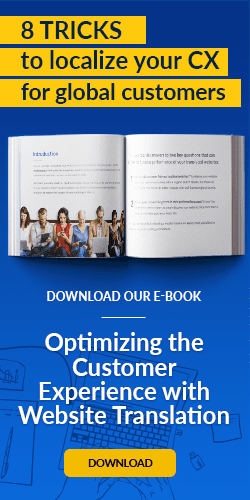Your global customers deserve an immersive, effective online user experience in their preferred languages. And while it’s ideal to offer them a fully-translated website, not all companies can afford to launch a completely translated site during their first days in a new market.
Fortunately, full-translation launches aren't always necessary. Today's best website translation solutions make it affordable to enter new markets by limiting your project's scope to the most critical and relevant content.
It’s a win-win: Your company saves money, and your customers still receive a localized online experience.
Why Reduce Scope?
There are several good reasons to limit the scope of website translations, including:
Budget Limitations: Some companies lack a robust translation budget, but are otherwise ready to expand into new markets.
Dipping In-Market: By translating just enough online content, companies can test a market to see if further investment is warranted.
Shared Ownership: Different corporate teams may control (and budget for) their own sections of a website, and only some may need translation.
Today’s best website translation solutions make it affordable to enter new markets by limiting your project’s scope.
What Requires Translation?
Firstly, clarify your business goals before starting a translation project. Leading website translation vendors can help you effectively narrow your project scope to serve those needs.
As you define your objectives, consider:
Outcomes: Are you striving to achieve brand awareness, sales conversions, new leads, local sales team support—or a combination of the bunch? Which goals take priority?
Conversion: Based on your goals, which conversion paths make the most sense to localize?
Regulatory Requirements: Are there local regulations or laws that require you to translate specific content on your site? That stuff can’t hit the cutting room floor.
What to Keep, What to Cut
Once you've identified your goals, it's time to reduce your project's scope to accommodate budgetary needs. What stays? What goes?
Consider targeting your website’s “must have” content for translation, including:
- Home page and landing pages: These pages provide customers an immediate, proven path to connecting with you.
- Site navigation“About” pages: Introducing your business to new customers helps you establish brand credibility.
- Promotional sections: Translate sections that are important to your target market
And consider these exclusions as you look for ways to shave down costs:
- Size of your primary website: A large site may have areas that aren’t relevant to secondary markets.
- Product pages: These pages may benefit from a low cost translation method, such as machine translation.
Localize home pages and landing pages. They're proven paths to connecting with your brand, and generating conversions.
Highly-Trafficked Content
Don't neglect hard data as you prioritize content for translation. By examining your website's metrics, you (or your vendor) can identify the sections, products and promotions your target audience visits the most.
You can prudently translate this content first, ensuring you provide what matters most to customers, from Day 1 in-market.
Conversion Paths
Whether your website is transactional or not, it has a conversion paths that lead new visitors into becoming customers. Be sure to translate any site elements that lead to proven conversions, such as:
- Newsletter opt-in
- E-book downloads
- Enrollment pages
- Shopping carts
This content can especially benefit from the touch of a human translator. Best-in-class vendors employ experts skilled in converting content into persuasive, culturally-relevant language for your global customers.
Content in your conversion funnel is best translated by humans. They can craft culturally-relevant and persuasive content.
Translation By ROI
Sometimes it just doesn’t make sense to use high-quality human translation for all of the content on your global sites.
For instance, e-commerce websites have products that have low price points, or very short product life-cycles. These low-profit (or lower value) items don't require artful translation. Localizing their product information with machine translation can radically reduce costs.
Great vendors can help you identify these products or website sections and translate accordingly. This enables your company to maximize a realistic budget, targeting your spend where it's most likely to produce real growth and results.
User Experience Over All
Even as you strive to meet your business goals and stay on budget, don’t alienate your global customers with a compromised experience.
Will you eliminate certain functionality or untranslated sections completely? Will you provide "interstitial" prompts that tell customers when they're entering untranslated sections of the site?
Consulting with great vendors here makes all the difference. These companies understand the localized customer experience (and local customers' preferences). The best are sensitive to your budget, and won't increase your translation spend.
Great vendors help you strike the perfect balance between your scope, budget and business goals.
Conclusion
In the end, website translation is about striking the right balance between budget, business goals and customer needs.
The best website translation solutions help you target your project scope to the most relevant content, while preserving user experience quality.
Last updated on November 06, 2017
